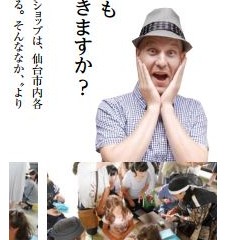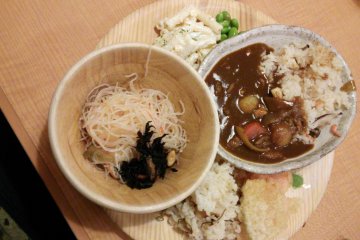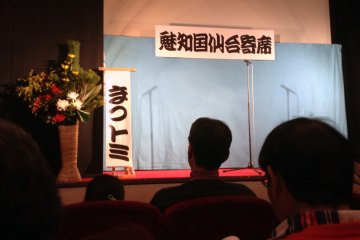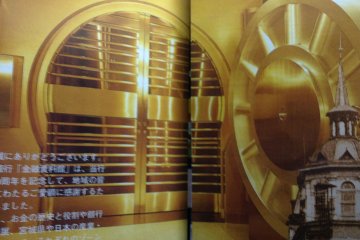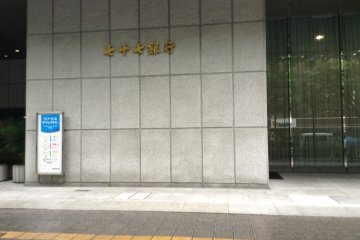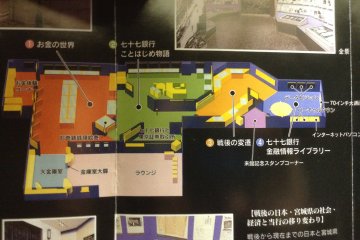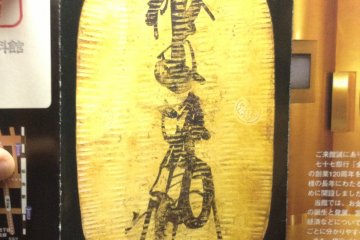Some people say money is just a tool used to purchase things or services, but it’s so much more. It is art, history, and culture in a tangible, inanimate object. The designs countries put on their money represent ideals and events that should be remembered or celebrated. Sometimes we do not realize how unique or how prosaic our own country’s currency is until we have a means of comparison. There are coin museums or mints around Japan in the larger cities such as Tokyo, Osaka, and a great money museum in Nagoya. If you find yourself on a Tohoku adventure, make sure to stop by the 77Bank in Sendai to experience the 77 Bank Currency and Banking Museum.
To English and even Japanese speakers, the 77Bank Currency and Banking Museum is still a big secret. There is no information about it in English and because it is open only during bank hours, namely weekdays from 10am to 3pm, many people do not even have a chance to visit it. Plus, they request you call in advance to make a reservation now: (022)267-1111.
For those of you that have never been to Miyagi Prefecture or its capital Sendai, you have probably never heard of this bank. The 77Bank has a long history starting back in 1872 when a law was passed allowing the creation of national banks. This regional bank really took off after 1932 when it merged with the Tohoku Jitsugyo Bank and the Gojo Bank. National banks at the time were given numbers depending on when they were created. When banks merged, they often added their number with the number of the bank they were merging with. For example, 55 Bank and 15 Bank merge to become 70 Bank. Things get a bit messy considering there were over 100 national banks at the time before they were privatized. If we stick with our example, this means there may already have been a 70 Bank when the two or more previous banks merged. With the passage of time, mergers, and bank collapses, this is no longer an issue. 77Bank has its headquarters in Sendai, the capital of Miyagi prefecture and the entire Tohoku region. To visit the bank museum, go up to the third floor by escalator to a hallway around the corner. There is a staff member that is sitting at a desk that will have you write down your name and telephone number, then give you a visitor badge. A security guard comes and escorts you to the fourth floor via secure elevator. As it is a bank building, you are not allowed to take pictures.
After making it through the security procedures, you arrive at the museum. You watch an introductory video in Japanese that promotes 77Bank and explains about the museum (admission is free, so please endure!), then you enter through a large vault door.
The museum is divided into several zones. First is the currency room; it is probably the most exciting part for the average visitor. Here are actual forms of currency from around the world, in addition to a wall devoted to the transformation of Japanese currency through time. It was fascinating seeing coins and notes from Europe, Africa, and other parts of Asia and the world and then comparing them to my own country’s currency, which in retrospect has an undistinguished, simple design. US money has notes of the same size with only a splash of color. With the exception of a few coins, nearly all US currency feature its presidents. Compare this to Japanese currency which celebrates or has celebrated politicians, philosophers, scientists, authors, prime ministers, and princes on its past and present money. Complimentary images of legendary animals such as dragons or Chinese phoenix are found alongside currency decorated with historic temples or castle gates. Japan celebrates its leaders not only from the political world, but those that have made a lasting impression in their field and on Japanese society.
While the first room focuses on currency, subsequent rooms narrow in on the banking history of Japan. A replica of what a Meiji bank counter may look like includes a small abacus for calculations and a gray mannequin of a female bank teller that scares the heck out of you when you first see it in the seemingly empty room when turning a corner. Later you can learn about the interactive computer screens, though again in Japanese. Follow a hall littered with plaques of information and some reproduced period photographs until you reach a vintage ATM. Put your pamphlet in one slot to get the date and time of your visit. Next, choose between two slots that give souvenir stamps. One features cartoon birds which are the mascots of 77Bank. The other features an old bank building.
With free admission and a free lesson about world and Japanese currency, this could be your chance to visit a bank and not lose money! Happy exploring.


